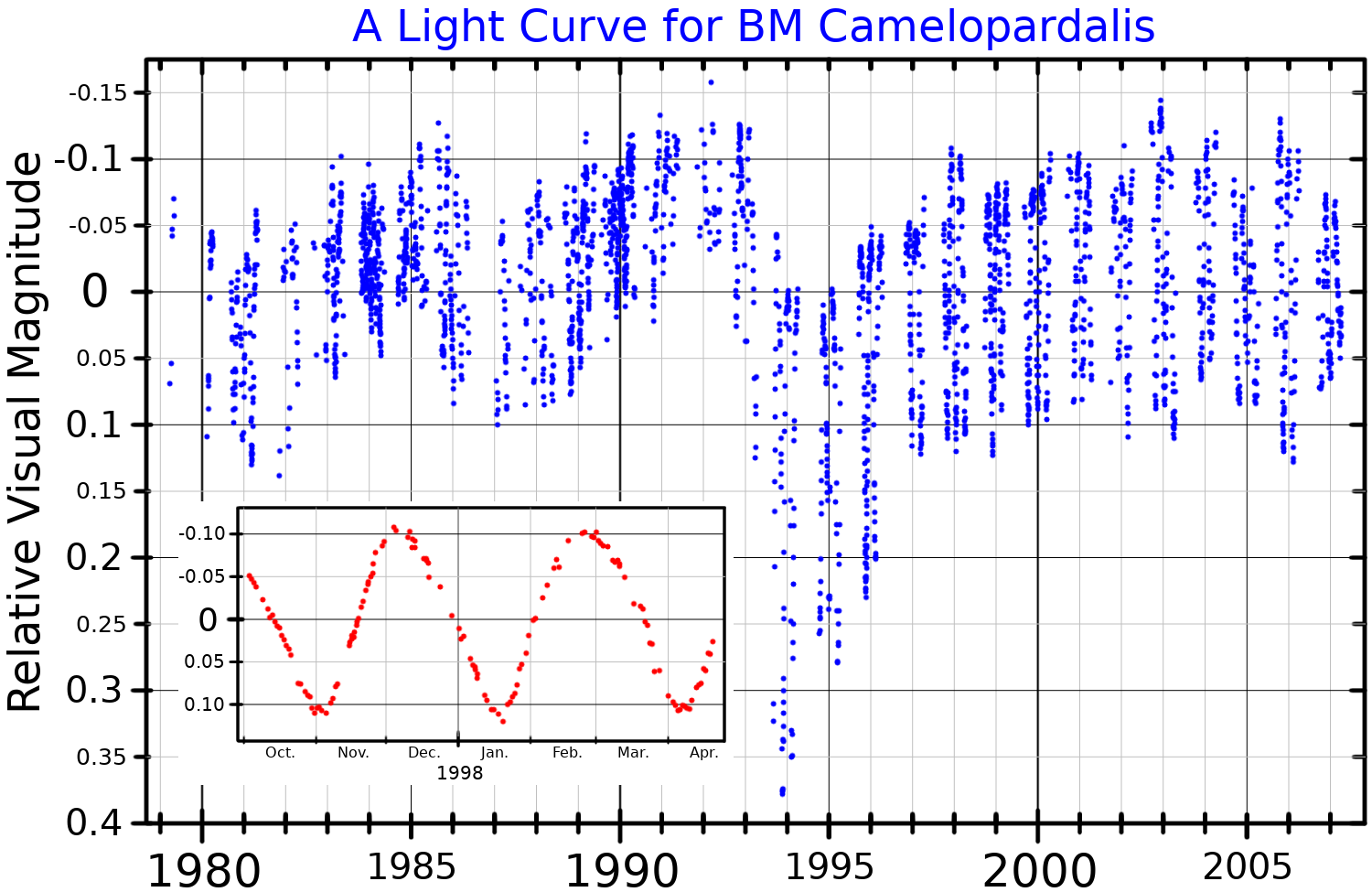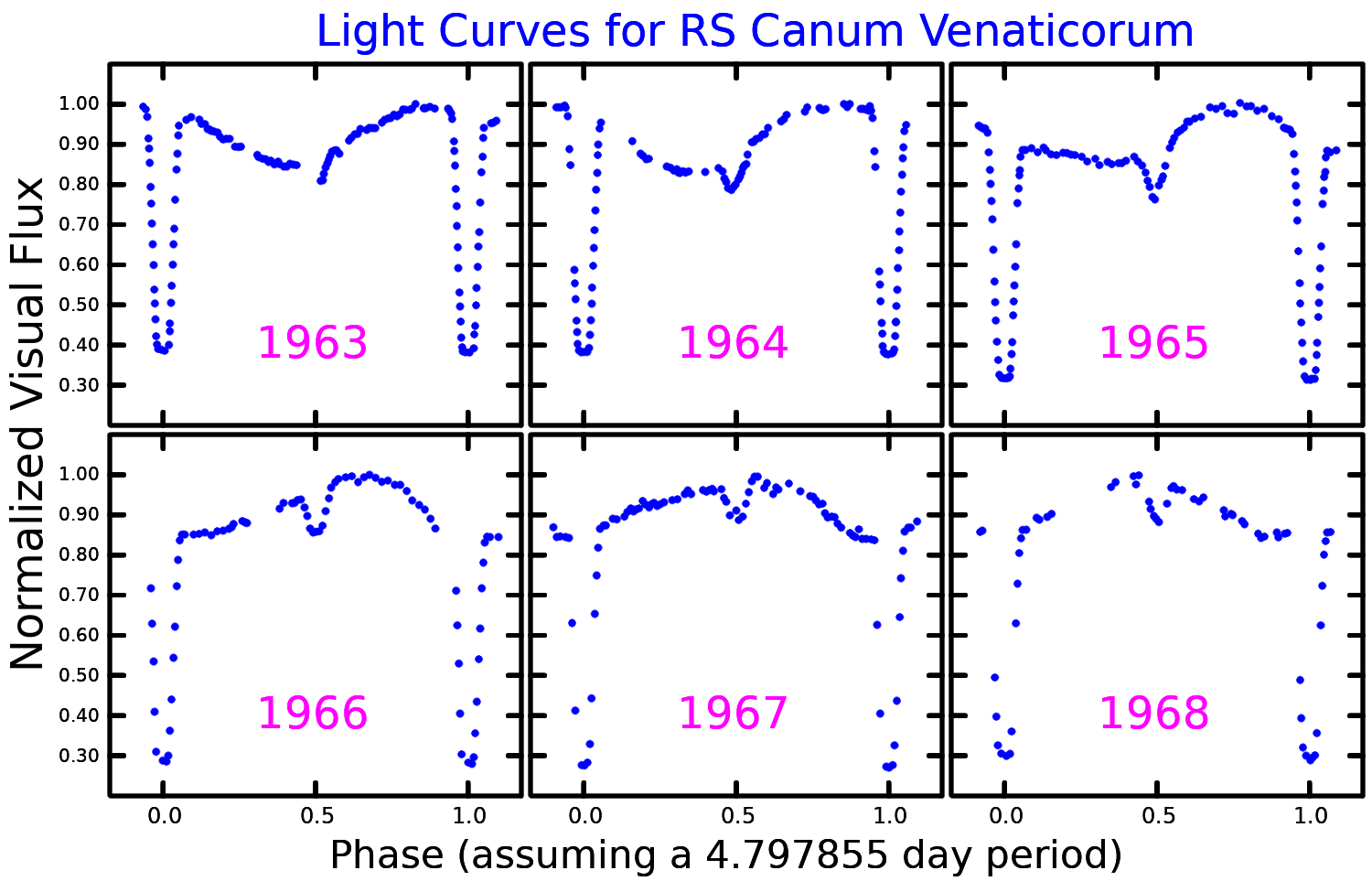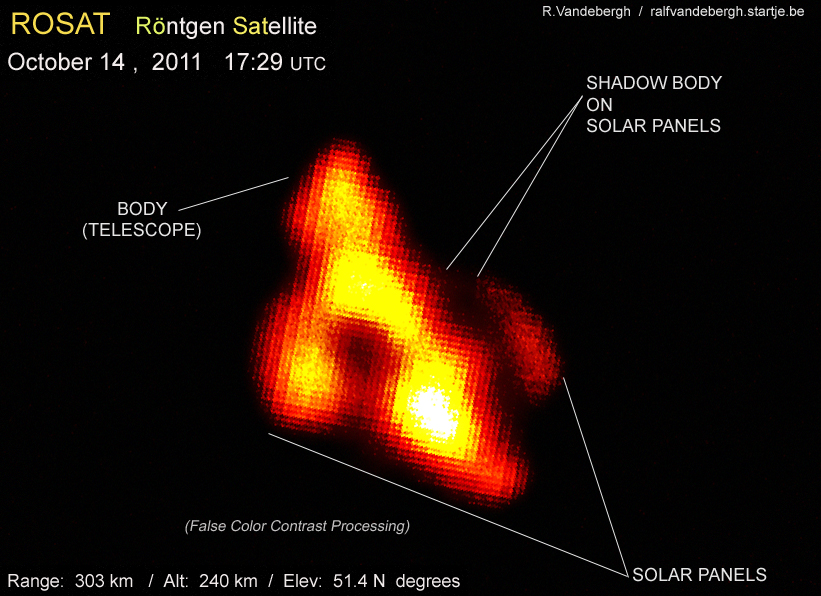|
12 Camelopardalis
12 Camelopardalis is a binary star in the northern circumpolar constellation of Camelopardalis, located 700 light years away from the Sun as determined from stellar parallax, parallax measurements. It forms a double star with 11 Camelopardalis, which is only 3 arcminutes away. The system has the variable star designation BM Camelopardalis; ''12 Camelopardalis'' is the Flamsteed designation. It is just visible to the naked eye, appearing as a dim, orange-hued star with an apparent visual magnitude of 6.08. The system is moving closer to the Earth with a heliocentric radial velocity of −2 km/s. Abt et al. (1969) determined this to be a single-lined spectroscopic binary system and computed an orbital solution with a orbital period, period of 80.17 days and an orbital eccentricity, eccentricity of 0.35. However, what appeared to be an Rotating ellipsoidal variable, ellipticity effect with a period of was found, which was inconsistent with the computed o ... [...More Info...] [...Related Items...] OR: [Wikipedia] [Google] [Baidu] |
Spectroscopic Binary
A binary star or binary star system is a system of two stars that are gravitationally bound to and in orbit around each other. Binary stars in the night sky that are seen as a single object to the naked eye are often resolved as separate stars using a telescope, in which case they are called ''visual binaries''. Many visual binaries have long orbital periods of several centuries or millennia and therefore have orbits which are uncertain or poorly known. They may also be detected by indirect techniques, such as spectroscopy (''spectroscopic binaries'') or astrometry (''astrometric binaries''). If a binary star happens to orbit in a plane along our line of sight, its components will eclipse and transit each other; these pairs are called ''eclipsing binaries'', or, together with other binaries that change brightness as they orbit, ''photometric binaries''. If components in binary star systems are close enough, they can gravitationally distort each other's outer stellar atmospheres. I ... [...More Info...] [...Related Items...] OR: [Wikipedia] [Google] [Baidu] |
RS Canum Venaticorum Variables
An RS Canum Venaticorum variable is a type of variable star. The variable type consists of close binary stars having active chromospheres which can cause large stellar spots. These spots are believed to cause variations in their observed luminosity. Systems can exhibit variations on timescales of years due to variation in the spot surface coverage fraction, as well as periodic variations which are, in general, close to the orbital period of the binary system. Some systems exhibit variations in luminosity due to their being eclipsing binaries. Typical brightness fluctuation is around 0.2 magnitudes. They take their name from the star RS Canum Venaticorum (abbreviated RS CVn). Otto Struve (1946) first called attention to the group, but it was Oliver (1974) who was the first to formally propose a set of observational characteristics to define the RS CVn criteria. The working definition, as it is used today, was that set down by Hall (1976). Berdyuginabr>2.4 RS CVn stars/ref> The R ... [...More Info...] [...Related Items...] OR: [Wikipedia] [Google] [Baidu] |
K-type Giants
K-type may refer to: *AEC K-type The AEC K-type was a type of bus chassis built by Associated Equipment Company (AEC) from 1919 until 1926, mainly for use in London by the London General Omnibus Company (LGOC). Description The K-type was an important design that ended the ..., a bus chassis * K-type star, a stellar spectral classification * K-type filter, a type of electronic filter * K-type asteroid, an unusual kind of asteroid {{disambig ... [...More Info...] [...Related Items...] OR: [Wikipedia] [Google] [Baidu] |
ROSAT
ROSAT (short for Röntgensatellit; in German X-rays are called Röntgenstrahlen, in honour of Wilhelm Röntgen) was a German Aerospace Center-led satellite X-ray telescope, with instruments built by West Germany, the United Kingdom and the United States. It was launched on 1 June 1990, on a Delta II rocket from Cape Canaveral, on what was initially designed as an 18-month mission, with provision for up to five years of operation. ROSAT operated for over eight years, finally shutting down on 12 February 1999. In February 2011, it was reported that the satellite was unlikely to burn up entirely while re-entering the Earth's atmosphere due to the large amount of ceramics and glass used in construction. Parts as heavy as could impact the surface. ROSAT eventually re-entered the Earth's atmosphere on 23 October 2011 over the Bay of Bengal. Overview The Roentgensatellit (ROSAT) was a joint German, U.S. and British X-ray astrophysics project. ROSAT carried a German-built imagi ... [...More Info...] [...Related Items...] OR: [Wikipedia] [Google] [Baidu] |
Einstein Observatory
Einstein Observatory (HEAO-2) was the first fully imaging X-ray telescope put into space and the second of NASA's three HEAO Program, High Energy Astrophysical Observatories. Named HEAO B before launch, the observatory's name was changed to honor Albert Einstein upon its successfully attaining orbit. Project conception and design The HEAO Program, High Energy Astronomy Observatory (HEAO) program originated in the late 1960's within the Astronomy Missions Board at NASA, which recommended the launch of a series of satellite observatories dedicated to high-energy astronomy. In 1970, NASA requested proposals for experiments to fly on these observatories, and a team organized by Riccardo Giacconi, Herbert Gursky, George W. Clark, Elihu Boldt, and Robert Novick responded in October 1970 with a proposal for an X-ray telescope. NASA approved four missions in the HEAO program, with the X-ray telescope planned to be the third mission. One of the three missions of the HEAO program was ca ... [...More Info...] [...Related Items...] OR: [Wikipedia] [Google] [Baidu] |
HEAO 1
HEAO-1 was an X-ray telescope launched in 1977. HEAO-1 surveyed the sky in the X-ray portion of the electromagnetic spectrum (0.2 keV – 10 MeV), providing nearly constant monitoring of X-ray sources near the ecliptic poles and more detailed studies of a number of objects by observations lasting 3–6 hours. It was the first of NASA's three High Energy Astronomy Observatories, launched on August 12, 1977 aboard an Atlas rocket with a Centaur upper stage, operated until 9 January 1979. During that time, it scanned the X-ray sky almost three times HEAO included four X-ray and gamma-ray astronomy instruments, known as A1, A2, A3, and A4, respectively (before launch, HEAO 1 was known as HEAO A). The orbital inclination was about 22.7 degrees. HEAO 1 re-entered the Earth's atmosphere on 15 March 1979. A1: Large-Area Sky Survey instrument The A1, or Large-Area Sky Survey (LASS) instrument, covered the 0.25–25 keV energy range, using seven large proportional counters. It w ... [...More Info...] [...Related Items...] OR: [Wikipedia] [Google] [Baidu] |
Starspot
Starspots are stellar phenomena, so-named by analogy with sunspots. Spots as small as sunspots have not been detected on other stars, as they would cause undetectably small fluctuations in brightness. The commonly observed starspots are in general much larger than those on the Sun: up to about 30% of the stellar surface may be covered, corresponding to starspots 100 times larger than those on the Sun. Detection and measurements To detect and measure the extent of starspots one uses several types of methods. *For rapidly rotating stars – Doppler imaging and Zeeman-Doppler imaging. With the Zeeman-Doppler imaging technique the direction of the magnetic field on stars can be determined since spectral lines are split according to the Zeeman effect, revealing the direction and magnitude of the field. *For slowly rotating stars – Line Depth Ratio (LDR). Here one measures two different spectral lines, one sensitive to temperature and one which is not. Since starspots have a low ... [...More Info...] [...Related Items...] OR: [Wikipedia] [Google] [Baidu] |
Emission Line
A spectral line is a weaker or stronger region in an otherwise uniform and continuous spectrum. It may result from emission or absorption of light in a narrow frequency range, compared with the nearby frequencies. Spectral lines are often used to identify atoms and molecules. These "fingerprints" can be compared to the previously collected ones of atoms and molecules, and are thus used to identify the atomic and molecular components of stars and planets, which would otherwise be impossible. Types of line spectra Spectral lines are the result of interaction between a quantum system (usually atoms, but sometimes molecules or atomic nuclei) and a single photon. When a photon has about the right amount of energy (which is connected to its frequency) to allow a change in the energy state of the system (in the case of an atom this is usually an electron changing orbitals), the photon is absorbed. Then the energy will be spontaneously re-emitted, either as one photon at the same f ... [...More Info...] [...Related Items...] OR: [Wikipedia] [Google] [Baidu] |
Stellar Classification
In astronomy, stellar classification is the classification of stars based on their stellar spectrum, spectral characteristics. Electromagnetic radiation from the star is analyzed by splitting it with a Prism (optics), prism or diffraction grating into a spectrum exhibiting the Continuum (spectrum), rainbow of colors interspersed with spectral lines. Each line indicates a particular chemical element or molecule, with the line strength indicating the abundance of that element. The strengths of the different spectral lines vary mainly due to the temperature of the photosphere, although in some cases there are true abundance differences. The ''spectral class'' of a star is a short code primarily summarizing the ionization state, giving an objective measure of the photosphere's temperature. Most stars are currently classified under the Morgan–Keenan (MK) system using the letters ''O'', ''B'', ''A'', ''F'', ''G'', ''K'', and ''M'', a sequence from the hottest (''O'' type) to the cool ... [...More Info...] [...Related Items...] OR: [Wikipedia] [Google] [Baidu] |
Giant Star
A giant star has a substantially larger radius and luminosity than a main-sequence (or ''dwarf'') star of the same surface temperature. They lie above the main sequence (luminosity class V in the Yerkes spectral classification) on the Hertzsprung–Russell diagram and correspond to luminosity classes II and III. The terms ''giant'' and ''dwarf'' were coined for stars of quite different luminosity despite similar temperature or spectral type (namely K and M) by Ejnar Hertzsprung in 1905 or 1906. Giant stars have radii up to a few hundred times the Sun and luminosities over 10 times that of the Sun. Stars still more luminous than giants are referred to as supergiants and hypergiants. A hot, luminous main-sequence star may also be referred to as a giant, but any main-sequence star is properly called a dwarf, regardless of how large and luminous it is. Formation A star becomes a giant after all the hydrogen available for fusion at its core has been depleted and, as a r ... [...More Info...] [...Related Items...] OR: [Wikipedia] [Google] [Baidu] |
Stellar Evolution
Stellar evolution is the process by which a star changes over the course of time. Depending on the mass of the star, its lifetime can range from a few million years for the most massive to trillions of years for the least massive, which is considerably longer than the current age of the universe. The table shows the lifetimes of stars as a function of their masses. All stars are formed from Gravitational collapse, collapsing clouds of gas and dust, often called nebulae or molecular clouds. Over the course of millions of years, these protostars settle down into a state of equilibrium, becoming what is known as a main sequence star. Nuclear fusion powers a star for most of its existence. Initially the energy is generated by the fusion of hydrogen atoms at the stellar core, core of the main-sequence star. Later, as the preponderance of atoms at the core becomes helium, stars like the Sun begin to fuse hydrogen along a spherical shell surrounding the core. This process causes the st ... [...More Info...] [...Related Items...] OR: [Wikipedia] [Google] [Baidu] |







